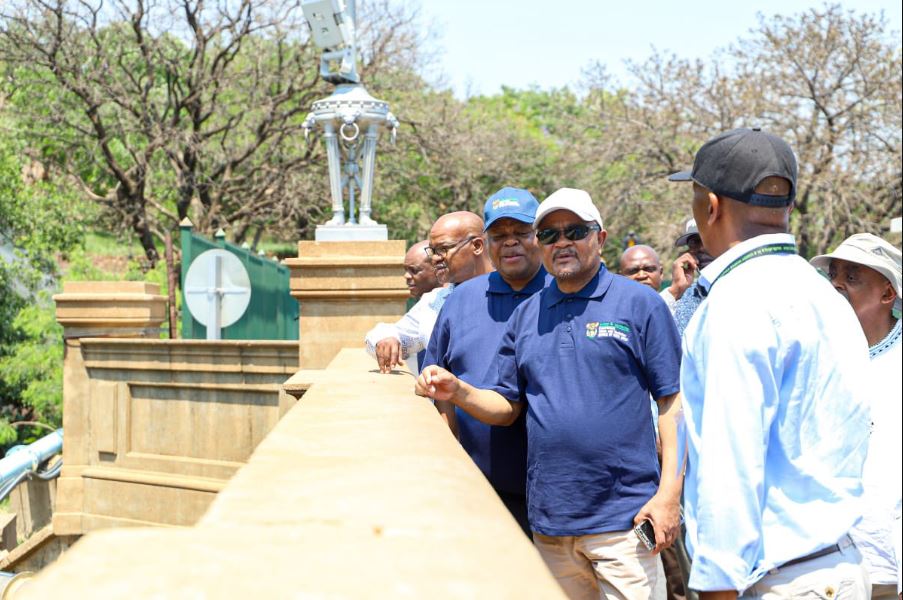In response to the ongoing challenges posed by hyacinth and algae affecting the water quality of Hartebeespoort Dam, Minister Senzo Mchunu of the Department of Water and Sanitation has assured the public that concerted efforts are underway to rehabilitate the iconic water body.
Minister Mchunu, addressing a community engagement event at the Oberon Eagle Waters Resort on Monday, provided updates on the steps being taken to mitigate the impact of invasive plants and algae on the dam. The occasion also marked the centenary celebration of Hartebeespoort Dam, emphasizing the vital role it plays in irrigation, tourism, and domestic consumption.
“We are aware of the hyacinth at the dam and are very concerned. It is for this reason that we have appointed Magalies Water, our entity in North West, for a three-year period to develop and implement a program to address the invasive plant and algae infestation,” Minister Mchunu stated.
Magalies Water has devised a comprehensive Bioremediation Plan, featuring interventions such as the profiling and fingerprinting of contaminants, removal of floating plants and debris, and the implementation of remediation technology to restore the dam’s ecological services.
Addressing a diverse audience that gathered to commemorate the dam’s centenary, Minister Mchunu underscored his commitment to overseeing the effective implementation of the Bioremediation Plan. He expressed gratitude to organizations contributing to the cause and emphasized the collective responsibility to safeguard the country’s water infrastructure.
“I want to ascertain our commitment that we have indeed rolled up our sleeves to completely rehabilitate the dam. We also want to thank the organizations that continue to help out in any way they can and continue to hold us accountable in the work that we have been brought into the office to do,” Minister Mchunu emphasized.
Furthermore, the minister stressed the importance of strengthening strategic partnerships to address water quality challenges, including solid waste and pollution issues in Hartebeespoort Dam. Encouraging collaboration with civil society organizations, he called for collective efforts in rehabilitating the dam.
Hartebeespoort Dam, constructed in 1921 and commissioned in 1923, has served a crucial role in providing water for irrigation. As it reaches its 100th year of existence, the centenary celebration aims to raise awareness of integrated water resource management, and water quality, and foster collaboration between the government, the private sector, and the community.
The event was held in partnership with Magalies Water, the provincial government, and various organizations, including the North West Parks and Tourism Board, the South African Resource Heritage Agency, and Magalie Biosphere, among others. The festivities sought to strengthen relations and promote effective integrated water resource management in and around Hartebeespoort Dam, ensuring its sustainability for future generations.
